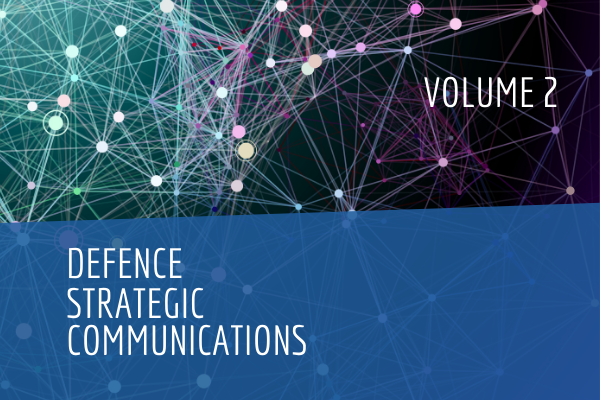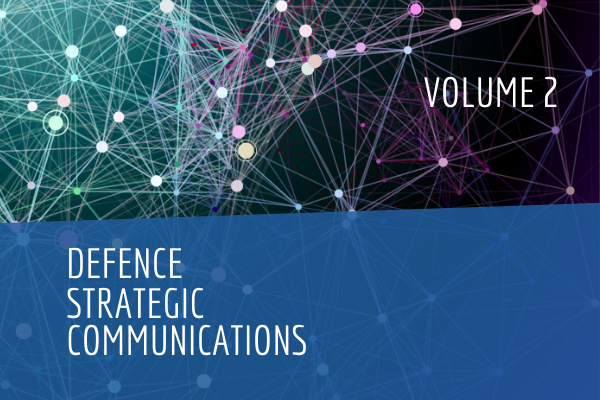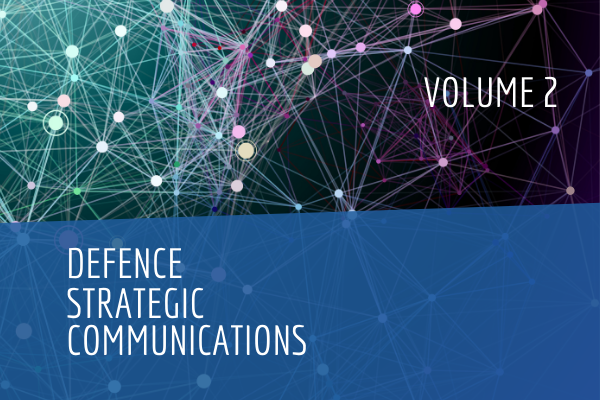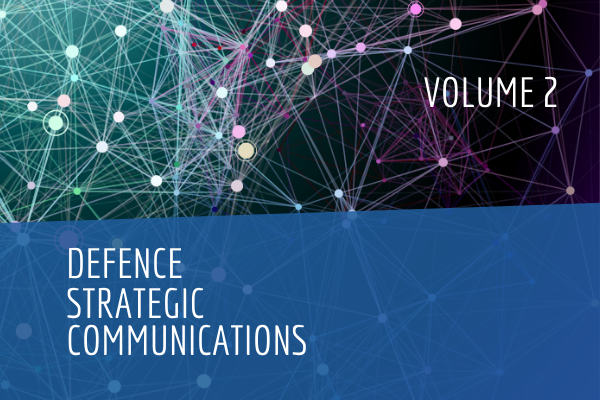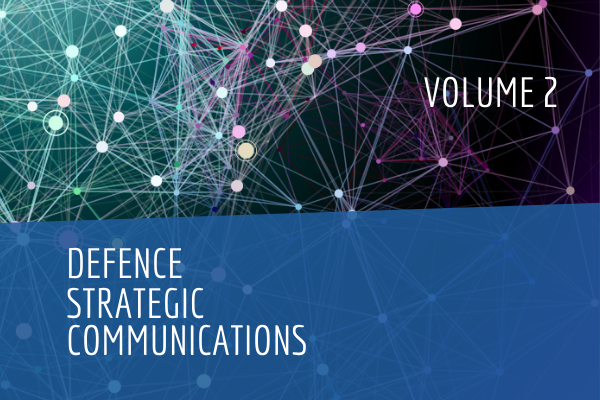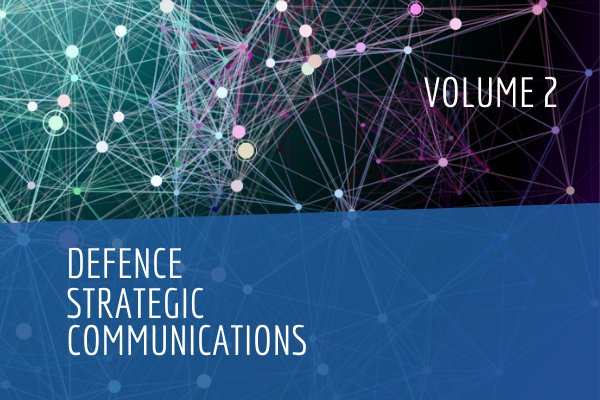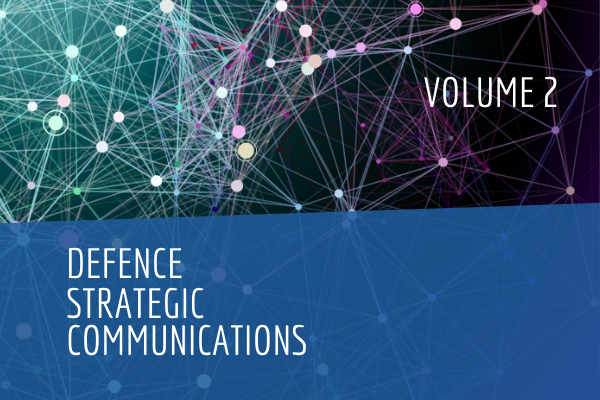Abstract
Social media is increasingly used to communicate strategic information during crises and to enable authorities to act tactfully. Numerous journalistic accounts have highlighted the prolific and disturbing use of social media by deviant groups among state and non-state actors to influence public opinion and provoke hysteria among citizens through disseminating misinformation or propaganda about various influential events such as the 2014 Crimean Water Crisis or the 2015 Dragoon Ride Exercise. We study the strategic communication used by deviant groups within the social media ecosystem, especially examining the cross-influence between blogs and Twitter. We have collected and analysed data from blogs and Twitter during the two aforementioned events. Our study shows that networked computers running automated and coordinated programs to perform specific tasks, or ‘botnets’ have been extensively used during the two events, greatly increasing the dissemination of propaganda. Furthermore, the behaviours of these botnets are becoming increasingly sophisticated over time, both from the perspective of information dissemination as well as coordination. The evolving behaviours of botnets make them elusive, even to state-of-the-art detection techniques, warranting more sophisticated botnet detection methodologies. In this study, we present methodologies informed by social science and computational network analysis to study the information dissemination and coordination behaviours of botnets and to aid the development of detection tools ready for deployment in cyber operations.
Keywords: information warfare, cyber operations, social media, Twitter, blogs, strategic communications, botnets, propaganda, disinformation campaigns, social network analysis, focal structures.
About the authors
Samer Al-khateeb is a PhD student at the University of Arkansas. He majors in Computer and Information Sciences with research interest in deviant behavioural modeling, deviant cyber flash mobs, cyber propaganda campaigns, and social cyber forensics.
Nitin Agarwal is the Jerry L. Maulden-Entergy Endowed Chair and Distinguished Professor of Information Science at University of Arkansas and Director of the Center of Social Media and Online Behavioral Studies. He researches social computing, deviant behavior modeling, group dynamics, social-cyber forensics, data mining, and privacy.
Major Rick Galeano is a US Army officer who has served at NATO’s Joint Force Command Brunssum. He lectures at NATO School Oberammergau, the Royal Danish Defence College and the Baltic Defence College.
Dr Rebecca Goolsby developed and heads a NATO Research Technology Group on Information Technologies and Crisis Response, currently focused on projects in Europe. Her research portfolio focuses on information technology and its social and cultural implications for peacebuilding, disaster response, and civil society.
Bibliography
Abokhodair, Norah, Daisy Yoo, and David W. McDonald. ‘Dissecting a Social Botnet: Growth, Content and Influence in Twitter’, in Proceedings of the 18th ACM Conference on Computer Supported Cooperative Work & Social Computing, 839–851.
Ackerman, Mark S., Jack Muramatsu, and David W. McDonald, ‘Social Regulation in an Online Game: Uncovering the Problematics of Code’, in Proceedings of the 16th ACM International Conference on Supporting Group Work, 173–182. ACM, 2010.
Agarwal, Nitin, Shamanth Kumar, Huan Liu, and Mark Woodward, ‘BlogTrackers: A Tool for Sociologists to Track and Analyze Blogosphere’, 2009.
Alexander, Lawrence, ‘Open-Source Information Reveals Pro-Kremlin Web Campaign’, Global Voices, 13 July 2015.
Al-khateeb, Samer, and Nitin Agarwal, ‘Analyzing Flash Mobs in Cybernetic Space and the Imminent Security Threats A Collective Action Based Theoretical Perspective on Emerging Sociotechnical Behaviors’, in 2015 AAAI Spring Symposium Series, 2015.
Al-khateeb, Samer and Nitin Agarwal,‘Examining Botnet Behaviors for Propaganda Dissemination: A Case Study of ISIL’s Beheading Videos-Based Propaganda’, 51– 57. IEEE International Conference on Data Mining Workshop, 2015.
Al-khateeb, Samer, Kevin J. Conlan, Nitin Agarwal, Ibrahim Baggili, and Frank Breitinger,‘Exploring Deviant Hacker Networks (DHN) On Social Media Platforms’, The Journal of Digital Forensics, Security and Law: JDFSL 11, no. 2 (2016): 7–20.
Allen, Michael,‘Kremlin’s ‘Social Media Takeover’: Cold War Tactics Fuel Ukraine Crisis’ Democracy Digest, , National Endowment for Democracy, 10 March 2014.
Bazzell, Michael, Open Source Intelligence Techniques: Resources for Searching and Analyzing Online Information. 4th ed. CCI Publishing, 2014.
Blondel, Vincent D, Jean-Loup Guillaume, Renaud Lambiotte, and Etienne Lefebvre, ‘Fast Unfolding of Communities in Large Networks’ Journal of Statistical Mechanics: Theory and Experiment 2008, no. 10 (2008): P10008.
Bohlen, Celestine,‘Cold War Media Tactics Fuel Ukraine Crisis’ The Times, 10 March 2014.
Boshmaf, Yazan, Ildar Muslukhov, Konstantin Beznosov, and Matei Ripeanu,‘Key Challenges in Defending against Malicious Socialbots’, In Proceedings of the 5th USENIX Conference on Large-Scale Exploits and Emergent Threats, 12–12. USENIX Association, 2012.
Brooking, T. Emerson, and P.W Singer,‘War Goes Viral: How Social Media Is Being Weaponized across the World’, The Atlantic, November 2016.
Cheng, Alex, and Mark Evans,‘Inside Twitter An In-Depth Look at the 5% of Most Active Users’, Sysomos Inc., 2009.
De Castella, Tom,‘Malaysia Airlines MH370: The Persistence of Conspiracy Theories’, BBC News, 8 September 2014.
Dewey, Caitlin,‘A Comprehensive Guide to the Web’s Many MH17 Conspiracy Theories’, The Washington Post, 18 July 2014.
DoD News, Defense Media Activity,‘Operation Atlantic Resolve Exercises Begin in Eastern Europe’, 24 March 2015.
TV7 Israel News,‘ISIL Executes an Israeli Arab after Accusing Him of Been an Israeli Spy’, TV7 Israel News, 11 March 2015.
Ferrara, Emilio, Onur Varol, Clayton Davis, Filippo Menczer, and Alessandro Flammini,‘The Rise of Social Bots’, Communications of the ACM 59, no. 7 (June 24, 2016): 96–104.
Ghosh, Saptarshi, Bimal Viswanath, Farshad Kooti, Naveen Kumar Sharma, Gautam Korlam, Fabricio Benevenuto, Niloy Ganguly, and Krishna Phani Gummadi,‘Understanding and Combating Link Farming in the Twitter Social Network’, in Proceedings of the 21st International Conference on World Wide Web, 61–70. ACM, 2012.
Girvan, M., and M. E. J. Newman,‘Community Structure in Social and Biological Networks’, Proceedings of the National Academy of Science of the United States of America 99, no. 12 (6 April 2002): 7821–26.
Hegelich, Simon, and Dietmar Janetzko,‘Are Social Bots on Twitter Political Actors? Empirical Evidence from a Ukrainian Social Botnet’, In Tenth International AAAI Conference on Web and Social Media, 579–82. Cologne, Germany: AAAI, 2016.
Helton, Shawn,‘Flight MH17 Conjures MH370, Exposing Western Deception, Leading To More Questions’ 21st Century Wire, 19 July 2014.
Holt, Thomas J.,‘Examining the Forces Shaping Cybercrime Markets Online’, Social Science Computer Review 31, no. 2 (2013): 165–77.
Howard, Philip N, Aiden Duffy, Deen Freelon, Muzammil M Hussain, Will Mari, and Marwa Mazaid,‘Opening Closed Regimes: What Was the Role of Social Media during the Arab Spring? ’, Social Science Research Networks, 17 April 2015.
Jaccard, Paul,‘The Distribution of the Flora in the Alpine Zone’, New Phytologist 11, no. 2 (1912): 37–50.
Jerome, Sara,‘Ukraine-Russia Conflict Results In ‘Water War’ ’, Water Online, 4 August 2014.
Karasaridis, Anestis, Brian Rexroad, and David Hoeflin,‘Wide-Scale Botnet Detection and Characterization’, in Proceedings of the First Conference on First Workshop on Hot Topics in Understanding Botnets, Vol. 7. Cambridge, MA, 2007.
Kumar, Shamanth, Geoffrey Barbier, Mohammad Ali Abbasi, and Huan Liu,‘TweetTracker: An Analysis Tool for Humanitarian and Disaster Relief ’, In ICWSM, 2011.
Labatut, Vincent, Nicolas Dugue, and Anthony Perez,‘Identifying the Community Roles of Social Capitalists in the Twitter Network’, 8. China, 2014.
Lutz, Catherine,‘Is Social Media a Dangerous Force Against Democracy?’, The Aspen Idea Blog, 6 August 2014.
Macfarguhar, Neil,‘Aid Elusive, Crimea Farms Face Hurdles’, The New York Times, 7 July 2014.
‘Maltego’, Paterva A New Train of Thought.
Moore, Sue,‘The Economist - Worldwide Brand Report’, The Economist, 8 November 2016.
Pavlishak, Alexel,‘Water Supply Problem in Crimea to Cost $247- 417 Million - Kremlin Aide’, TASS Russian News Agency, 28 April 2014.
Povar, Digambar, and V.K. Bhadran,‘Forensic Data Carving’, in Digital Forensics and Cyber Crime, 53:137–48. Lecture Notes of the Institute for Computer Sciences, Social Informatics and Telecommunications Engineering. Springer Berlin Heidelberg, 2011.
Preiss, Danielle,‘How Social Media Is Helping Nepal Rebuild after Two Big Earthquakes’, Quartz India, 19 May 2015.
Protalinski, Emil,‘Facebook: 5-6% of Accounts Are Fake’, ZDNet, 8 March 2012.
Reidy, Padraig,‘MH17: Five of the Most Bizarre Conspiracy Theories’, The Guardian, 22 July 2014.
Rodríguez-Gómez, Rafael A., Gabriel Maciá-Fernández, and Pedro García- Teodoro,‘Survey and Taxonomy of Botnet Research through Life-Cycle’, ACM Computing Surveys (CSUR) 45, no. 4 (2013): 45.
Schmidt, Charles W. ‘Trending Now: Using Social Media to Predict and Track Disease Outbreaks.” Environ Health Perspect 120, no. 1 (2012): 30–33.
Seddon, Max,‘How A British Blogger Became An Unlikely Star Of The Ukraine Conflict — And Russia Today’, BuzzFeed News, 20 May 2014.
Sen, Fatih, Rolf Wigand, Nitin Agarwal, Serpil Yuce, and Rafal Kasprzykm,‘Focal Structures Analysis: Identifying Influential Sets of Individuals in a Social Network’, Social Networks Analysis and Mining 6 (2016): 1–22.
Sen, Fatih, Rolf T Wigand, Nitin Agarwal, Mutlu Mete, and Rafal Kasprzyk, ‘Focal Structure Analysis in Large Biological Networks’, In IPCBEE, Vol. 70. 1. Singapore: IACSIT Press, 2014.
Shaheen, Kareem,‘Isis Video Purports to Show Massacre of Two Groups of Ethiopian Christians’, The Guardian, 19 April 2015.
Shirky, Clay,‘The Political Power of Social Media: Technology, the Public Sphere, and Political Change’, Council on Foreign Relations 90, no. 1 (February 2011): 28–41.
Sindelar, Daisy,‘The Kremlin’s Troll Army: Moscow Is Financing Legions of pro- Russia Internet Commenters. But How Much Do They Matter?’, The Atlantic, 12 August 2014.
Smith, Craig,‘By The Numbers: 170+ Amazing Twitter Statistics’, DMR (Digital Marketing Ramblings), 30 April 2016.
Smith, Marc A., Ben Shneiderman, Natasa Milic-Frayling, Eduarda Mendes Rodrigues, Vladimir Barash, Cody Dunne, Tony Capone, Adam Perer, and Eric Gleave, ‘Analyzing (Social Media) Networks with NodeXL’, in Proceedings of the Fourth International Conference on Communities and Technologies, 255–264. ACM, 2009.
Staff, BBC News,‘Russia Fears Crimea Water Shortage as Supply Drops’, BBC News, 25 April 2014.
Staff, CNN, ‘ISIS Video Appears to Show Beheadings of Egyptian Coptic Christians in Libya’, CNN, 16 February 2015.
Staff, DMR,‘By The Numbers: 200 Surprising Facebook Statistics (April 2016)’, DMR (Digital Marketing Ramblings), 1 June 2016.
Staff, The Economist,‘Russia, MH17 and the West A Web of Lies’, The Economist, 26 July 2014.
Staff, Global Crime,‘Exploring the Social Organisation and Structure of Stolen Data Markets’, Global Crime 14, no. 2–3 (2013): 155–74.
Staff, Global Research,‘Flight MH17 Conjures MH370, Exposing Western Deception, Was It a Staged Event? ’, Global Research, 19 July 2014.
Staff, NPR,‘The Arab Spring: A Year Of Revolution’, National Public Radio (NPR). 17 December 2011, All Things Considered.
Staff, Radio Free Europe,‘U.S. Convoy: In Czech Republic, Real-Life Supporters Outnumber Virtual Opponents’, Radio Free Europe Radio Liberty, 30 March 2015.
Staff, RT,‘ ‘Tanks? No Thanks!’: Czechs Unhappy about US Military Convoy Crossing Country’, RT Question More, March 22, 2015.
Staff, RT,‘Ukraine Builds Dam Cutting off Crimea Water Supply’, RT Question More, 10 May 2014.
Staff, Sputnik,‘Czechs Plan Multiple Protests Of US Army’s Operation Dragoon Ride’, Sputnik News, 2 March 2015.
Tatham, S. A., Defence Academy of the United Kingdom, and Advanced Research and Assessment Group. Strategic Communication: A Primer. Shrivenham: Defence Academy of the United Kingdom, Advanced Research and Assessment Group, 2008.
Yuce, Serpil, Nitin Agarwal, Rolf T Wigand, Merlyna Lim, and Rebecca S Robinson, ‘Studying the Evolution of Online Collective Action: Saudi Arabian Women’s ‘Oct26Driving’ Twitter Campaign’, In Social Computing, Behavioral-Cultural Modeling and Prediction, 413–20. Springer, 2014.
